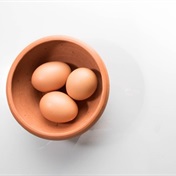Using skin cells from people with type 1 diabetes, researchers were able to produce cells that made insulin in response to changing blood-sugar levels, though not as efficiently as normal insulin-producing cells do.
The major immediate implication from this experiment is that scientists now have a preliminary lab model of human type 1 diabetes cells, and the hope is that an animal model of the disease could be developed from this research. Down the road, this finding could lead to a way to replace the islet cells that were destroyed when the disease first developed.
"This is a big deal," said Susan Solomon, CEO of the New York Stem Cell Foundation, which provided some of the funding for the study. "Tackling the basic biology of type 1 diabetes, which is a very complex disease, is a critical step. With these cells, we can see in a dish what's happening to the immune system, and if you don't understand the immune response, you get nowhere with type 1 diabetes."
"This is very preliminary data, but now we could potentially look at the interaction between immune system cells and insulin-producing cells to find the root cause or trigger, which we think might vary from patient to patient," explained Meri Firpo, an assistant professor at the Stem Cell Institute at the University of Minnesota.
Results of the study will be published in the online edition of the Proceedings of the National Academy of Sciences.
Type 1 diabetes is believed to be an autoimmune disease that destroys the insulin-producing islet (beta) cells in the pancreas. Because the body no longer produces its own insulin, people with type 1 diabetes must replace that lost insulin through injections or an insulin pump. Researchers suspect that people who develop the disease have a genetic susceptibility to the disease and that an environmental factor, such as a virus, somehow triggers the disease.
A model of type 1 diabetes
In the current study, researchers from the Howard Hughes Medical Institute at the Harvard Stem Cell Institute and the Naomi Berrie Diabetes Center at Columbia University, obtained skin samples from two white males who had type 1 diabetes. One was diagnosed at 3 years of age, while the other was first diagnosed when he was 21.
Normal skin cells are already specialised cells. Their job is to protect the body with a covering of skin, explained Firpo. To transform these cells into embryonic-like stem cells, essentially getting them back to the beginning when they weren't already specialised, researcher Doug Melton and his colleagues used three inserted genes to reprogram the cells, creating what's known as an induced pluripotent stem cell (iPS). In this case, the cells were then turned into insulin-producing cells.
Along with helping to provide a model of type 1 diabetes, this technology might also one day be used to create islet cells for transplant from a person's own skin cells. That way, there would be no need for immunosuppressive medications.
However, because the current technique uses genetic manipulation to change the cell, Firpo said long-term safety issues would have to be addressed. Mouse cells that have been similarly manipulated have developed benign tumours, she said. So, using such cells for transplant is definitely not "a near-term thing", she stressed.
Research-related implications
The practical implications from this study "are primarily research-related", said Julia Greenstein, director of beta cell replacement for the Juvenile Diabetes Research Foundation (JDRF) in New York City.
She said that this study helps further at least two areas of research that JDRF is focusing on: developing a self-source for islet-cell transplants and blocking the immune response. Another area of research that JDRF is actively pursuing is the possible encapsulation of islet cells before transplantation so that they could hide from the immune system.
"Our hope is that understanding all of these things will come together – that once we've figured out how to make the cell source that we'll also have figured out how to block the immune response, but there's a lot of basic science one has to do to get there," said Greenstein.
The good news, she added, is that "there's an incredible amount of exciting research that has the capacity to impact the disease in the long term going on".
(HealthDay News, September 2009)




 Publications
Publications
 Partners
Partners










